- THE PRINCESS PASSPORT
- Email Newsletter
- Yacht Walkthroughs
- Destinations
- Electronics
- Best Marine Electronics & Technology
- Boating Safety

Reminiscing “Freedom”: a 12 Metre Classic
- By Herb McCormick
- January 2, 2024
Forty years ago this past September, in the waters of Rhode Island Sound just off the coastal city of Newport, a crew of Aussies shocked the sailing world. The 12 Metre Australia II defeated the American boat Liberty to win the 1983 America’s Cup and bring the New York Yacht Club’s 132-year defense of the Auld Mug to a conclusion. It’s safe to say the Cup, and my hometown of Newport, have never been the same.
I spent a lot of time on the sound that summer taking in the action, so when I signed up to volunteer on a marshal boat for the latest edition of the 12 Metre World Championship regatta in August, I found myself on the very same waters, which turned into a pretty nostalgic voyage down a nautical memory lane. But the graceful Twelve I couldn’t take my eyes off wasn’t the winner of the Modern Division, Challenge XII , or even the victor of the Traditional/Vintage Division, Columbia . Nope, I was more or less transfixed on the runner-up to Challenge XII , a striking-blue yacht called Freedom . Of all the entries in the 10-boat fleet, to me, Freedom was easily the most historic and memorable.
Three years before the Australians absconded with the Cup, in 1980, with the estimable Dennis Conner in command, Freedom won the contest in dominant fashion, and it seemed like the New York Yacht Club’s winning streak would go on forever. It was designed by the legendary naval architecture firm Sparkman & Stephens, which had drawn the lines of every Cup winner but one since 1936. Conner was back on the helm in the losing effort in ’83, but he would find redemption, winning the Cup back for the United States in Western Australia in 1987. But for S&S, Freedom marked the end of an illustrious era. The firm would never again create a Cup winner.
For the 12 Metre Worlds, ironically enough, the navigator aboard Freedom was a lanky old Aussie mate of mine called Grant Simmer, who’d served in the same capacity aboard Australia II for his country’s winning effort way back when. With the exception of the gray hair, he looked exactly the same.
This time, however, Simmer couldn’t work his magic. Unlike the America’s Cup, where boats compete in one-on-one match racing, the World Championship event is fleet racing, with everyone out on the track at the same time. It’s a different game. And Challenge XII had a ringer of its own: the president of North Sails, Ken Read, also a longtime America’s Cup veteran. As far as I was concerned, Freedom was easily the prettiest of all the Modern yachts. When push came to shove, though, it was no longer the fastest.
Today’s America’s Cup competition, conducted on closed-course race tracks in skittish foiling catamarans—about as far removed as possible from a stately 12 Metre racing in the open ocean—bears little resemblance to what the event looked like in the early 1980s. And Newport has undergone a radical makeover as well. The shipyards where the Cup boats used to reside between races have been replaced by condos and hotels, and the only real remaining trace of the America’s Cup is the boulevard of the same name. It’s a reminder that the only true constant in life is change.
But for a few afternoons last August, I could shut my eyes for a moment of reminiscence and open them up to see what I can only describe as a fleeting image of a bygone time. Freedom may be a footnote in the history of yacht racing, but the big, beautiful blue boat still looks powerful and fantastic all the same.
- More: Americas Cup , November 2023 , Racing , Sailing , Sailing Yachts , Silent Running , Yachts
- More Yachts
Azimut’s New Flagship: Grande 44M
Meet the italia yachts veloce 43, on board the intrepid 51 panacea, sunseeker 182 ocean reviewed, for sale: ferretti yachts 750, for sale: 2007 96′ hargrave, for sale: hampton endurance 680 lrc.
- Digital Edition
- Customer Service
- Privacy Policy
- Email Newsletters
- Cruising World
- Sailing World
- Salt Water Sportsman
- Sport Fishing
- Wakeboarding
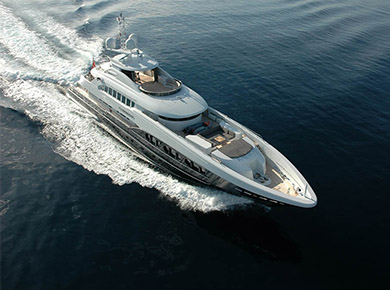
Find your Yacht
Find your destination.
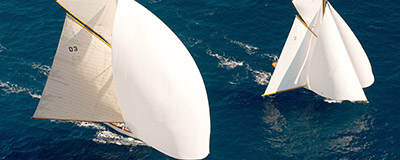
Buy a Yacht
Share a yacht, yacht investment.
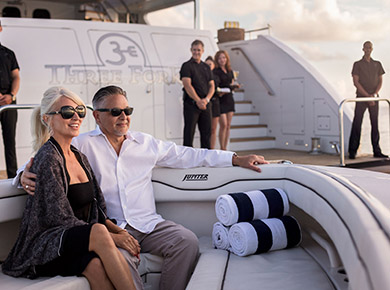
Find relevant Management Services

- +41 78 226 17 10
- Seestrasse 39 · 9326 Horn · Switzerland
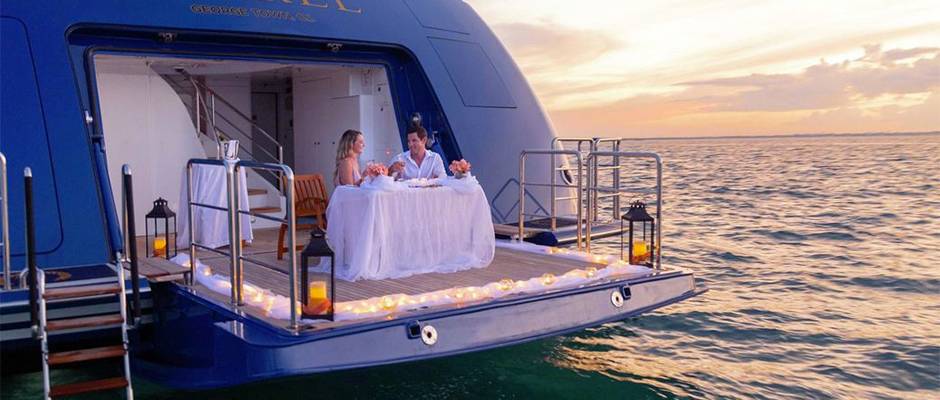
Our Policies
December 5, 2022
A brief history of the famous “12 metre” class yachts.
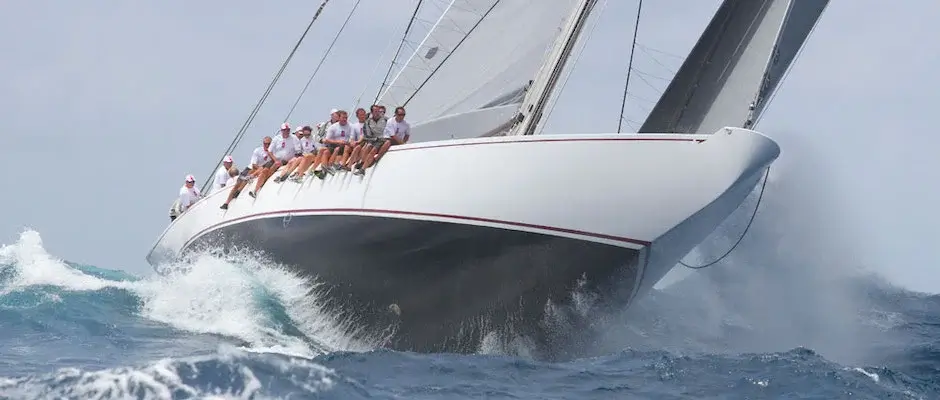
Historic Yachts
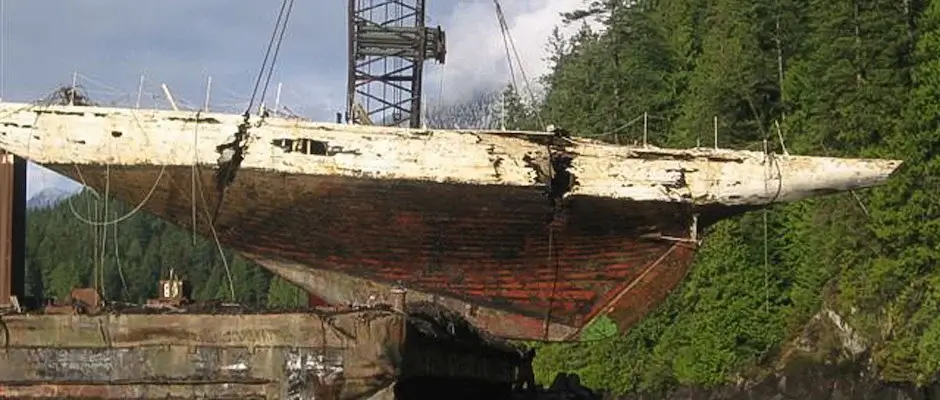
Fascination 12mR
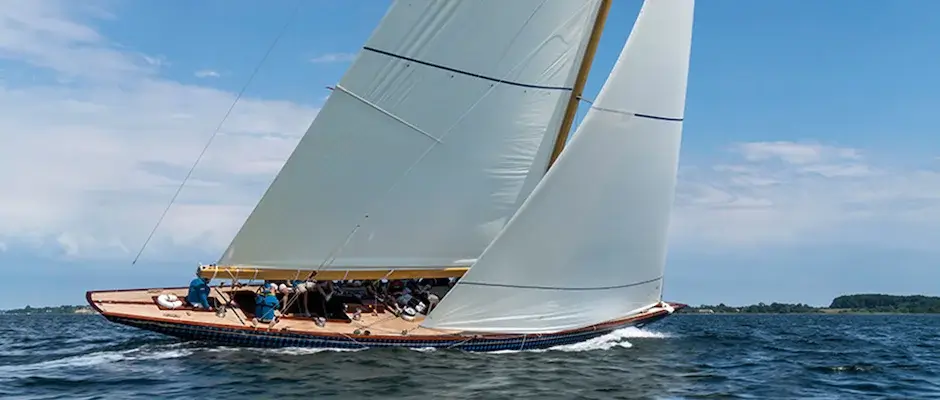
Elegant Beauties
The boats, especially the long-keeled examples of the thirties are elegant. You can look at them for a long time, from the massive stem to the stern that is lifted apart from the water.
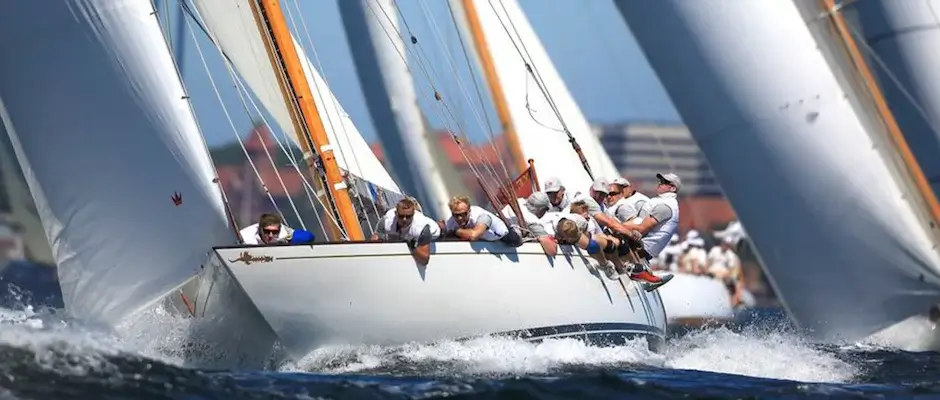
But let’s tell the story from the beginning
America’s Cup contenders between 1958 and 1987 – the 12 Metre Class

International Rules
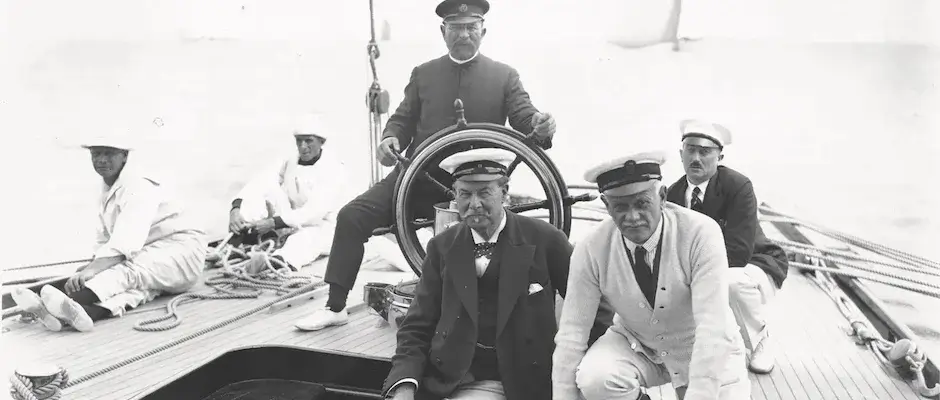
The America’s Cup, the oldest Trophy
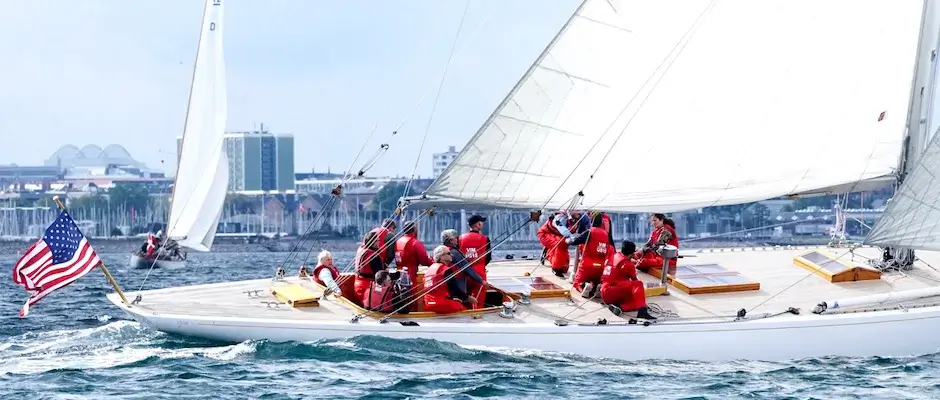
The Auld Mug
“12 metres” were designed with one thing in mind – to win America’s Cup races. The design of their products reflects this in every aspect. America’s Cup twelves didn’t have room for an engine, anything below decks, or even a toilet when they were campaigning. The deck layouts of America’s Cup twelves are set up for optimal sail performance as well as for speed. When racing, the sails are the engine of the boat, so trimming them correctly and quickly was crucial to winning. America’s Cup “12 Metre” crews were also trained for efficiency. When it was their turn to compete in the famous America’s Cup, they had intensive training and practice to be flawless at sail handling and the best yacht racers in the world.
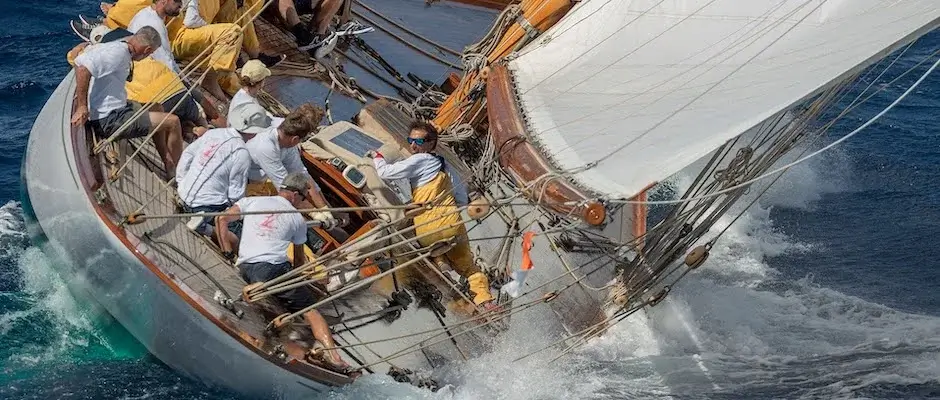
During the summer months of August and October, many of these classic racers attend numerous sailing events on the French Riviera . Noblesse Yachts is the only company that offers sailing opportunities as well as yacht charters.
Come sail with us on a piece of America’s Cup racing history on these sleek racing beauties!
Available Dates are: 07.09. – 10.09.23: Vele d’Epoca di Imperia ( See Video here ) 13.09. – 16.09.23: Monaco Classic Week ( See Video here ) 19.09. – 25.09.23: Les Regates Royales de Cannes ( See Video here ) 24.09. – 08.10.23: Les Voiles de Saint Tropez ( See Video here )
Note about copyright: This text is copyrighted by us and you may copy and use it only with a link to our website along with a clear indication of our authorship. Thank you!
#classicyacht #veledepoca # monacoclassicweek #adrenaline #regatesroyles #lesvoilesdesainttropez #sainttropez #cannes #monaco #12metre #racing #racingyacht #americascup #12mR-Class, #12mRClass, #12mRWorldChampionship, #12mRWorlds, #JohanAnker, #TheaD-1, #VanityVK-5, #VimUS-15, #WingsK-15, 12mR racing, #noblesse #noblesseyachts #luxurycharter #luxuryyachts #boatrental #travelwithstyle #holiday2022 #yachtlife #yachtworld #yachtlover #sailaway #holidayescape #timeofmylife

Sustainable Corporate Events: Charting a Greener Future
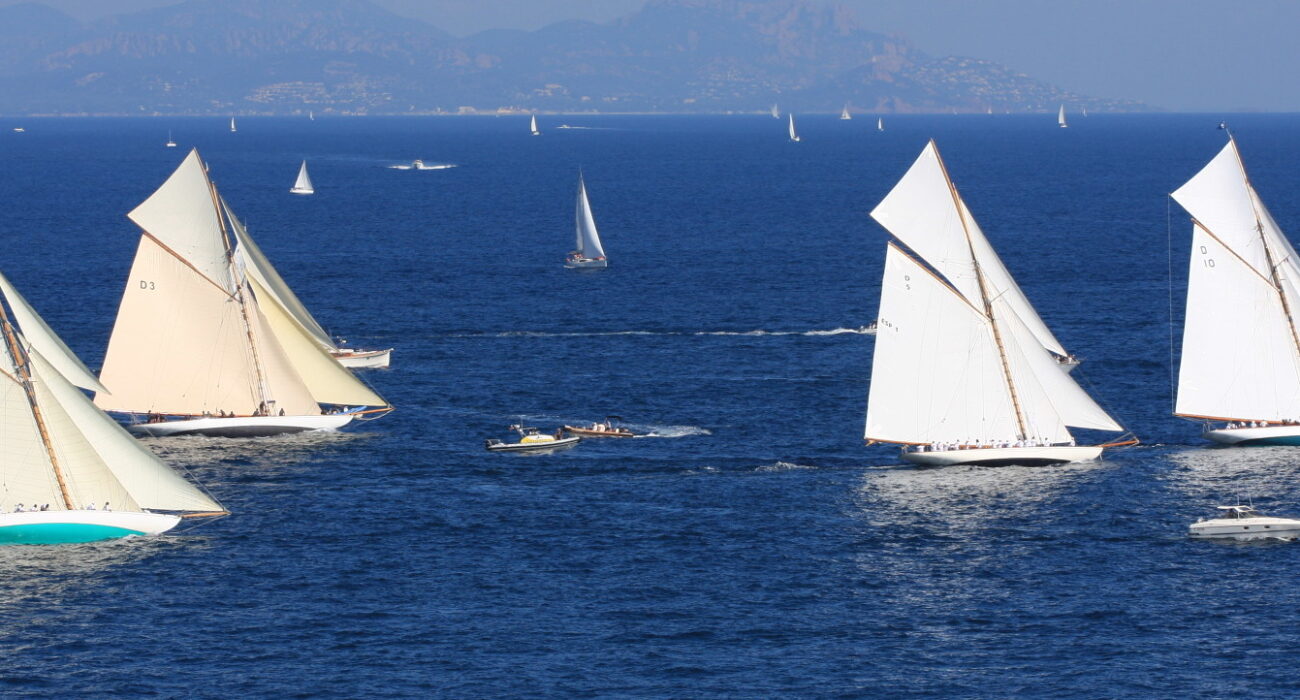
The 15-Metre Class Yachts: A Historical Overview
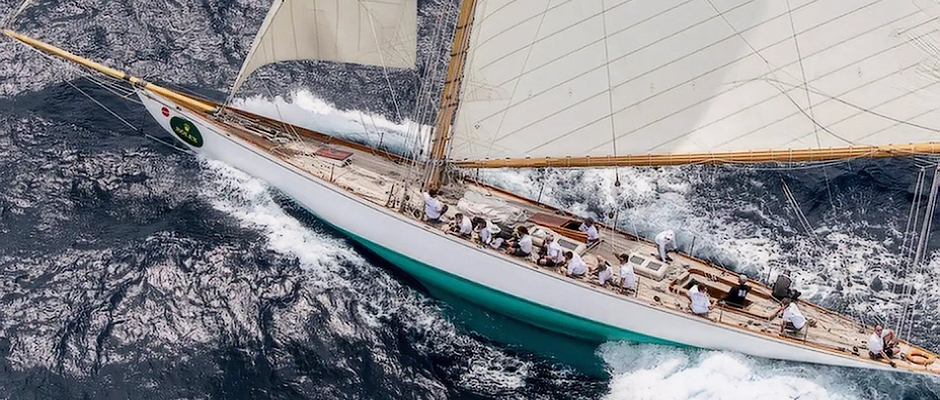
Exploring the Timeless Elegance of Mariska: A Classic Yacht’s Journey Through History
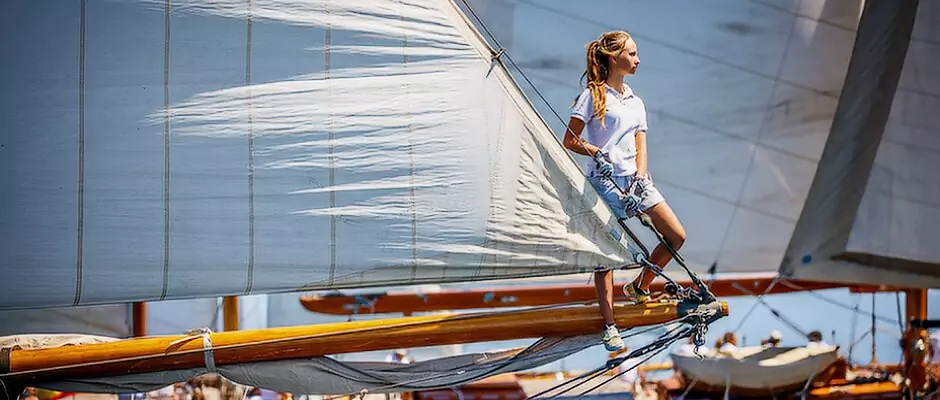
Your Regatta 101 Guide for Participating with your own Boat

A Journey Through The Argentario Sailing Week: Sailing the Spectacular!

2024 Sailing’s Grand Spectacle: The 37th America’s Cup Roars into Barcelona with a Classic Twist
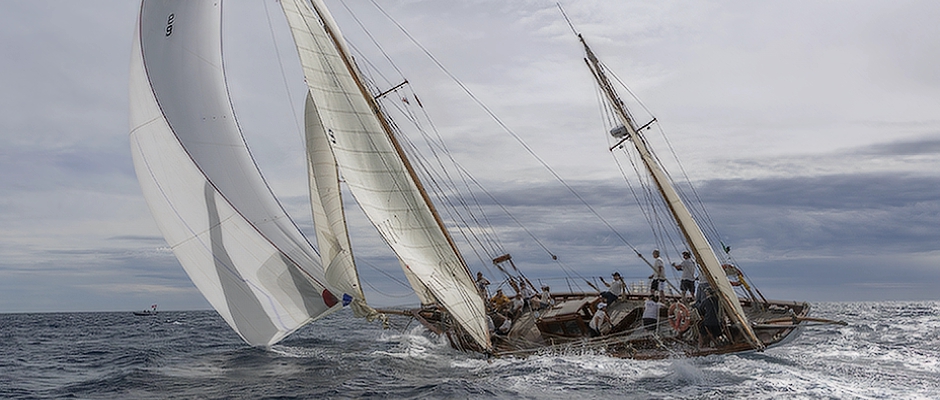
1890’s Masterpiece: Yacht SKY’s Timeless Voyage
- Privacy Policy
- Cookie Policy
This website uses cookies to ensure the best experience. Read more.

The 19mR Octavia racing with the 15mR class (Kiel Week, 1913) Used from 1907–1920
- L = waterline length (LWL)
- G = chain girth
- d = difference between girth and chain
- S = sail area
- F = freeboard
Second International Rule
Used from 1920–1933.
Third International Rule
The International Rule has been the backbone of Yacht racing. The Rule created a formula that took into account most problematic areas that had previously caused dissent among the racing nations. It does not restrict size—many individual classes were created. It allowed designers a degree of latitude—yet controlled unsafe extremes. It laid down construction rules and governed the use of materials—yet understood that the Rule must develop.
It is important to note the term Metre does not refer to the length of the yacht; it is the product of a formula and denotes the class. A Six Metre yacht can be from 10 metres to 12 metres in length.
Metre Rule has proven to be successful and enduring, seeing only minor revisions over the years. Whilst many different Metre Class yachts were constructed during those first heady years, three sizes have maintained their popularity; the 6, 8 and 12 Metre Classes. The year after the ratification, the 12 Metre Class were chosen for the Olympics—the 6 and 8 Metres were also used at different stages. The 12 Metre Class was used for the America’s Cup events until 1986. Relatively new arrival is one-person 2.4 Metre Class, currently active Paralympics class.
International Rule should not be confused with Square Metre Rule.
12-metre class
It is very common to have a dental emergency -- a fractured tooth, an abscess, or severe pain when chewing. Over-the-counter pain medication is just masking the problem. Seeing an emergency dentist is critical to getting the source of the problem diagnosed and corrected as soon as possible. Here are some common dental emergencies: Toothache: The most common dental emergency. This generally means a badly decayed tooth. As the pain affects the tooth's nerve, treatment involves gently removing any debris lodged in the cavity being careful not to poke deep as this will cause severe pain if the nerve is touched. Next rinse vigorously with warm water. Then soak a small piece of cotton in oil of cloves and insert it in the cavity. This will give temporary relief until a dentist can be reached. At times the pain may have a more obscure location such as decay under an old filling. As this can be only corrected by a dentist there are two things you can do to help the pain. Administer a pain pill (aspirin or some other analgesic) internally or dissolve a tablet in a half glass (4 oz) of warm water holding it in the mouth for several minutes before spitting it out. DO NOT PLACE A WHOLE TABLET OR ANY PART OF IT IN THE TOOTH OR AGAINST THE SOFT GUM TISSUE AS IT WILL RESULT IN A NASTY BURN. Swollen Jaw: This may be caused by several conditions the most probable being an abscessed tooth. In any case the treatment should be to reduce pain and swelling. An ice pack held on the outside of the jaw, (ten minutes on and ten minutes off) will take care of both. If this does not control the pain, an analgesic tablet can be given every four hours. Other Oral Injuries: Broken teeth, cut lips, bitten tongue or lips if severe means a trip to a dentist as soon as possible. In the mean time rinse the mouth with warm water and place cold compression the face opposite the injury. If there is a lot of bleeding, apply direct pressure to the bleeding area. If bleeding does not stop get patient to the emergency room of a hospital as stitches may be necessary. Prolonged Bleeding Following Extraction: Place a gauze pad or better still a moistened tea bag over the socket and have the patient bite down gently on it for 30 to 45 minutes. The tannic acid in the tea seeps into the tissues and often helps stop the bleeding. If bleeding continues after two hours, call the dentist or take patient to the emergency room of the nearest hospital. Broken Jaw: If you suspect the patient's jaw is broken, bring the upper and lower teeth together. Put a necktie, handkerchief or towel under the chin, tying it over the head to immobilize the jaw until you can get the patient to a dentist or the emergency room of a hospital. Painful Erupting Tooth: In young children teething pain can come from a loose baby tooth or from an erupting permanent tooth. Some relief can be given by crushing a little ice and wrapping it in gauze or a clean piece of cloth and putting it directly on the tooth or gum tissue where it hurts. The numbing effect of the cold, along with an appropriate dose of aspirin, usually provides temporary relief. In young adults, an erupting 3rd molar (Wisdom tooth), especially if it is impacted, can cause the jaw to swell and be quite painful. Often the gum around the tooth will show signs of infection. Temporary relief can be had by giving aspirin or some other painkiller and by dissolving an aspirin in half a glass of warm water and holding this solution in the mouth over the sore gum. AGAIN DO NOT PLACE A TABLET DIRECTLY OVER THE GUM OR CHEEK OR USE THE ASPIRIN SOLUTION ANY STRONGER THAN RECOMMENDED TO PREVENT BURNING THE TISSUE. The swelling of the jaw can be reduced by using an ice pack on the outside of the face at intervals of ten minutes on and ten minutes off. If you cherished this post and you would like to acquire far more information concerning dentist DC kindly go to the page.

Navigation menu

International racing sailing class / From Wikipedia, the free encyclopedia
Dear wikiwand ai, let's keep it short by simply answering these key questions:.
Can you list the top facts and stats about 12 Metre?
Summarize this article for a 10 year old
The 12 Metre class is a rating class for racing sailboats that are designed to the International rule . It enables fair competition between boats that rate in the class whilst retaining the freedom to experiment with the details of their designs. The designation "12 Metre" does not refer to any single measurement on the boat, and is not referencing the vessels overall length, rather, measures the sum of the components directed by the formula which governs design and construction parameters. Typically 12 Metre class boats range from 65 to 75 feet (about 20 to 23 m) in length overall; they are most often sloop -rigged, with masts roughly 85 feet (26 m) tall.
The first 12 Metres were built in 1907. [1] The 12 Metre class was used in the Olympic Games of 1908 , 1912 and 1920 but few boats participated in these events. The 12 Metre class boats are best known as the boat design used in the America's Cup from 1958 to 1987.
Competitiveness between boats in the class is maintained by requiring the boats to be in compliance with the 12 Metre formula. Designers and builders are required to take into account such things as the sail area, the boat length at the waterline and the boat girth (the measurement around the boat from one sideboard, under the keel , and then over the top on the opposite side back to the original side). The measurements are then weighted in the formula. For example, the present formula takes the square root of the sail area rather than total area. The combination of weighted measurements must be less than or equal to 12 metres. Designers are free to change any of the component variables, as well as other details, such as the size of the rudder and keel, so long as the corresponding changes elsewhere produce an ultimate sum of 12 metres and the resulting boat is both seaworthy and safe. Though disparity between boats are minimized by the rule, enough variation exists so that races are as much about design and construction as they are about seamanship and tactics.
12-metre class
The 12 Metre class is a rating class for racing sailboats that are designed to the International rule . It enables fair competition between boats that rate in the class whilst retaining the freedom to experiment with the details of their designs. The designation "12 Metre" does not refer to any single measurement on the boat, it is not their overall length for example, but to the sum of the components of the formula that governs design and construction. Typically 12 Metre class boats range from 65 to 75 feet (about 20 to 23 m) in length overall; they are most often sloop -rigged, with masts roughly 85 feet (26 m) tall.
The first 12 Metres were built in 1907. The 12 Metre class was used in the Olympic Games of 1908 , 1912 and 1920 but few boats participated in these events. The 12 Metre class boats are best known as the boat design used in the America's Cup from 1958 to 1987.
Competitiveness between boats in the class is maintained by requiring the boats to be in compliance with the 12 Metre formula. Designers and builders are required to take into account such things as the sail area, the boat length at the waterline and the boat girth (the measurement around the boat from one sideboard, under the keel , and then over the top on the opposite side back to the original side). The measurements are then weighted in the formula. For example, the present formula takes the square root of the sail area rather than total area. The combination of weighted measurements must be less than or equal to 12 metres. Designers are free to change any of the component variables, as well as other details, such as the size of the rudder and keel, so long as the corresponding changes elsewhere produce an ultimate sum of 12 metres and the resulting boat is both seaworthy and safe. Though disparity between boats are minimized by the rule, enough variation exists so that races are as much about design and construction as they are about seamanship and tactics.
The "12 Metre" yachts are also referred to as "Twelves", "12s", or "12 Metres".
The formula and rules
The Formula and associated rules for designing and constructing 12 Metre yachts has been modified several times from inception in racing.
The purpose of the Formula and rules was to encourage designer creativity to optimise designs to get the best overall performance when racing whilst maintaining competitive racing between the different designs. Although the Formula and Rules allowed some creativity they were also intended to be comprehensive enough to eliminate loop holes which could result in an extreme design which conformed to the 12 Metre rule but completely outclassed other contemporary designs on the race course. If the rules were considered to be too loose then it would discourage the building of new 12 Metre yachts for fear of a new boat being outclassed even before it was launched.
The Rules were typically updated in response to advances in areas such as material technology (e.g. metal masts versus wooden masts), design technology (e.g. use of the wind tunnel to design sails and sail/mast combinations, advances in fluid dynamics), and equipment (e.g. winch technology).
The Rule has four distinct periods:
First rating rule
Used from 1907–1920
Second rating rule
Used from 1920–1933.
Third rating rule, and, from 1956, the America's Cup rule
Used from 1933 onwards:
( International Twelve Metre Association ):
Associated with the formula is an extremely comprehensive set of rules. The rules can be classified into two main areas: rules concerning safety and rules to ensure competitive racing. For example, the maximum total area of all cockpits is specified to minimise the chance of a boat being swamped in rougher seas. Structural requirements are specified to ensure that strength is not sacrificed by the need to get weight low down in the keel. Materials are specified plus numerous other details concerning all aspects of the boat. The intention is to challenge designers but ensure competitive racing.
America's Cup

The America's Cup racing resumed in 1958 after World War II by a syndicate led by Henry Sears , more economical vessels were desired to replace the huge and expensive J-class yachts that were raced in the 1930s; the 12 Metre class was selected.
In September 1956, a Royal Yacht Squadron syndicate was formed to build a 12 Metre for the 1958 America's Cup . The UK challenger was selected based on model tank testing and David Boyd's second design was chosen. Sceptre was launched at the yard of Alexander Robertson and Sons Ltd on 2 April 1958, but lost to the New York Yacht Club yacht Columbia in September 1958. Sceptre is currently owned and raced by the Sceptre Preservation Society. Alexander Robertson and Sons Ltd also built two of the earliest 12-Metres: Heatherbell (designer Thomas Glen-Coats , 1907), which represented Finland in the 1912 Summer Olympics; Cyra (designer Alfred Mylne , 1909).
In 1987, use of the 12 Metre class was ended, switching to International America's Cup Class boats for the 1992 competition.
Post-America's Cup
12 Metre yachts were used for the last time in America's Cup competition at the 1987 event held in Fremantle, Australia. 12 Metres continued to race together on a local basis but due to the high cost and without the impetus and prestige surrounding competition in the America’s Cup, no new boats have been built since 1987.
The latter part of the 20th century saw a big revival in interest in classic yachts including 12 Metre yachts and particularly those of wooden construction. There were an increasing number of prestigious regattas in attractive locations such as the Mediterranean and the Caribbean. Also, a more prosperous global economy prevailed and the result was an increasing number of restorations and racing of older 'classic' 12 Metres.
Potential restorers of older boats who wanted to race were potentially faced with a dilemma of whether to restore a boat to its original specification or make modifications to make an older design competitive with a newer design. For example, a yacht designed under the First International Rule would have a wooden mast, gaff rig , and sails made of cotton; whereas yachts designed under the Third International Rule, such as Vim , had a metal mast, Bermuda rig , and sails made from Dacron .
To encourage participation in racing and also encourage restoration which remained true to the spirit of the original design, the 12 Metre class association introduced a handicapping system to allow 12 Metres of all ages to race together on a more equal footing. The basis is a handicap applied to each boat according to the 'era' of its design to encourage owners to restore older boats and participate in exciting and sociable racing.
A 12 Metre is classified as belonging to one of three periods. Each Period is defined as a range of dates which coincided with a particular type of keel or rudder design becoming widespread.
- Division A:- Also called Grand Prix, this subclass starts when winged keels became the norm. It covers all 12 Metre yachts built with winged keels and all constructed after 1983. Australia II , launched in 1982, was the first wing keeled 12 Metre so is considered the first of this division. USA (US 61), also fits into this category, even though its keel structure is different from the standard winged keel of the class. It is also the only 12 Metre to have a "canard" or rudder mounted forward of the keel.
- Division B (Modern):- Starts when a skeg mounted rudder separated from the keel became the norm. It includes all 12 Metres built during the period 1968 - 1983. Intrepid is considered the first Modern even though it was built in 1967 since it was the first 12 Metre to use a skeg mounted rudder. It excludes Australia II , built in 1982, which is in Period A due to its winged keel design.
- Division C (Classic):- All other 12 Metre class yachts built before 1968 but excluding Intrepid which is in Period B by virtue of its skeg mounted rudder design. Divisions D (Vintage) & E (Antique) are the remaining 2 Divisions based on the year of construction including Antique (most of which are in fact gaff rigged). Older sloop-rigged yachts like Vim and Onawa fit into the Vintage category, yachts like Erna Signe belong to the Antique division. In the early 21st century interest in ownership and restoration of 12 Metres was such that specialist restoration companies would speculatively locate old boats under threat of destruction and publicize the availability in order to attract the funding for a full restoration.
World Championships
- Onawa (US 6) & Anitra (US 5) - The oldest American 12 Metre still intact.
- Vim : Designed in 1939 by Olin Stephens who considered the possibilities given by every aspect of the rules and produced a very fast boat. Vim had numerous innovative features including a trim tab on the rudder, two-speed winches and a lighter mast made of Duralumin (a form of aluminium used in the aircraft industry). Vim is considered a benchmark design which was continually refined over her racing career. In 1939 Vim came to the UK and won 19 races out of 28. The next generations of 12 Metres designed and built 20 years after Vim was launched still found Vim extremely difficult to beat in competition.
- Sparkman & Stephens designed five successful America's Cup defenders for the NYYC . The first was Columbia , winner of the 1958 Cup, followed by Constellation in 1964. Intrepid won the 1967 and 1970 America's Cups. Courageous won in 1974 and 1977 (skippered by Ted Hood in 1974 and Ted Turner in 1977). The last of the S&S designed 12s to win the America's Cup was Freedom in 1980. Both Intrepid and Courageous are still sailing and racing today in Newport . Columbia and Freedom are still actively sailed.
- Sceptre (K 17), the British challenger for the America's Cup in 1958, is believed to be the only UK challenger still sailing in British waters. [2]
- Weatherly , designed by Philip Rhodes , successfully defended the America's Cup in 1962.
- Australia II , Alan Bond 's famous winged keel boat that won the 1983 America's Cup . The boat that ended the longest winning streak in sport. Designed by Ben Lexcen , Australia II was one of the first racing yachts to use appendages on the keel, which allowed the yacht to point higher, sail faster and be quicker in stays. The keel design also allowed a reduction in weight in the keel which then allowed other beneficial changes in the measured dimensions which resulted in a yacht optimized for the conditions on the race course at Newport, Rhode Island.
- New Zealand (KZ 7) "Kiwi Magic" Runner-up in 1987 Louis Vuitton Cup , and the third 12 Metre to be made from fibreglass. Sister yachts KZ-3 and KZ-5 did not compete at the 1987 America's Cup but took part in the 1986 World Championships in Perth. KZ-7 went on to win the 1988 World Championship in Sardinia. Nicknamed the " Plastic Fantastic ". Skippered by Chris Dickson
- Stars & Stripes 87 (US 55) Winner of the 1987 America's Cup . The fastest heavy weather 12 Metre boat ever built. [3]
In addition to design there are other factors which affect racing results. There are other 12 Metre designs which are fast boats but struggled to reach their full potential due to inadequate crewing or lack of preparation or bad luck or a combination of both. In the America's Cup era it will always be a matter of debate but Vim , Intrepid , Courageous , Australia II , and Stars and Stripes 87 are generally considered to be the best 12 Metres in terms of design excellence and performance on the race course.
- Square Metre Rule (sailing)
- ↑ Cook, Theodore Andrea (1908). The Fourth Olympiad, Being the Official Report (PDF) . London: British Olympic Association. pp. 339–354 . Retrieved 10 June 2016 .
- ↑ "Sceptre K 17: The British America's Cup Challenger" .
- ↑ Fisher, Bob (1987). The America's Cup 1987: The Official Record .
External links
- The International Twelve Metre Association (ITMA)
- Trivia 12 Metre Restoration: 12 Metre yachts built the world wide
- History of 12 Metre Class and list of all US 12 Metre yachts built
- Sparkman & Stephens: The Twelves (Technical explanation)
- Luigi Lang, Dyer Jones & Jan Slee (2010). The Twelve Metre Class . ltyachting.com. ISBN 978-88-95171-22-7.
- http://www.columbiatrading.com/cgi-bin/columbia/30590.html
- Sceptre Preservation Society
- http://www.12mr.de/ Trivia (Norsaga)

12 METRE RACING
Philipsburg, Sint Maarten
FREQUENTLY ASKED QUESTIONS
What is a 12 Metre Class Sailboat?
12 Metre Class sailboats are so called not because of their overall length, but because they must conform to a formula. The formula takes into consideration various measurements of the boat and the result must not exceed 12 metres. In fact, a 12 Metre Class sailboat is approximately 70 feet long with masts 86 feet high and they weigh in at about thirty-five tons.
When did 12 Metre Class racing begin?
The 12 Metre Class was first established in 1906, and became competitive in Europe and North America.
For the 1958 America’s Cup Trophy, the contestants and the America’s Cup Organizing Committee agreed that it was time to move on from the pre-war era of the “J Class” boats. A lighter, more maneuverable design, it was argued, would allow for closer, more exciting racing. The very popular 12 Metre Class, possibly the most successful race boats ever designed, were adopted.
How many races does 12 Metre Racing run each day?
There are currently five races, or “regattas” run each day. Start times are 8.30am, 10.00am, 11.30am, 1.00pm & 2:30pm.
How long is each race?
Each Regatta takes approximately two and a half hours. On some days, this is subject to wind and water conditions, but every effort is made to keep to this schedule.
Guests are requested to arrive 15 minutes before the departure time.
How should I dress?
We recommend you wear soft-soled running shoes. T-shirts and shorts over a swimsuit is ideal. You will be exposed to our beautiful Caribbean sun, ensure you bring your sunscreen, sunglasses and a hat!
There is ample storage space below for beach bags and towels. You can bring your camera, which should remain in your bag (below decks) until after the race, when there will be time for photos on your sail back to the tender.
Are there any restrooms on board?
The fleet of 12 Metre yachts are race boats in their purest form. There are no toilets on board, although there are plenty back at the 12 Metre Clubhouse.
Can guests with mental/physical limitations participate?
Every effort is made to accommodate guests with special needs. However the nature of the 12 Metre Race is very participatory, and the dynamic motion of the race boats during the race may cause problems for some.
We request that any guest with special needs be accompanied by a companion who has the capability of assisting the guest on and off the boats.
For safety purposes, the 12 Metre Regatta reserves the right to pull any guest off the tour at any time if we feel there is a safety issue.
Are there any age limitations?
Our suggested minimum age is nine years old. However, there are definitely some people under nine who are capable and competent; typically they are members of a sailing family with considerable sailing experience and an understanding of the requirements and potential hazards of sailing. In this case, children between 6-8 years of age will be welcomed with guardian’s consent.
We also suggest a maximum age of 70 years old. However, for some, age is but a number. We have had guests in their eighties thrive on the water and activley participate. If the guest is in good health and can sit, stand, and walk independently, we are happy to accommodate them on tour.
For safety purposes, the 12 Metre Racing reserves the right to pull any guest off the tour at any time if we feel there is a safety issue.

HAVE MORE QUESTIONS?
- Nautic Shows
- America’s Cup
- Classic Yachts
- Motor Yachts
- Sailing Yachts
- Superyachts
- Yachts News
- Destinations
- Yacht Clubs
- Boat Racing
- Meta Yachts

The 12 Metre Yacht Club (12MYC) is excited to announce the release of 12mR: An Enduring Legacy. Filmed during the 2019 12mR World Championship in Newport R.I., highlights include racing footage and competitor interviews paired with the experienced insights of the 12MYC’s Station Steward Gary Jobson who also wrote and narrated this documentary.
From July 8 – 13, 2019, twenty-two 12 metre yachts and more than 300 world-class sailors representing six countries converged on Newport to compete at the 2019 12mR World Championship. “The narrative of this film demonstrates why the people who race 12mRs are so passionate about the yachts,” said Jobson. “The feeling of sailing a twelve upwind connects sailors to the wind and the water in a way that makes you want to come back.”
America’s Cup, Olympic and World Champions are attracted to the 12 metres for the elite level of racing, the history of the Class and the raw power of the yachts themselves. For three-time Olympic medalist Jesper Bank who helmed Legacy (KZ-5), the attraction to this regatta was Newport and the 12mR history. His fellow Olympic medalist and Kookaburra II (KA-12) helmsman Torben Grael said: “It’s nice to race boats that were in the Cup…they are still very competitive…with many good sailors.”
An Enduring Legacy co-producer, Jamie Hilton added: “It was important for us to document the once-in-a-lifetime gathering of 12 metres at Newport for the 2019 World Championship. Not only did we want to capture the legendary racing fleet in action, but also the voices of the participants— many of whom had raced on the twelves in America’s Cup competition when it was held in Newport between 1958 and 1983. Both American and international sailors were excited to be in Newport and ecstatic to be back on a 12 metre.”

RELATED ARTICLES
Maxi class to join the fun at 2024 orc world championship.

Subscribe to our newsletter
To be updated with all the latest news, offers and special announcements.
LATEST ARTICLES
Riccardo tosetto fourth in the global solo challenge, palmavela reaches 150 entries, unleashing potential: emirates team new zealand’s two-boat training session, nyyc american magic’s intensive training session amidst barcelona’s spring blues, editor picks, canadian beau lake introduces the tahoe ’14 and lugano ’14 electric runabouts, underwater adventure and exploration with deepflight’s super falcon 3s, driving performance on land and on water: 41′ amg carbon edition, popular posts, young designer of the year 2022: ioana valentina corcodel reveals 65m ophelia concept, mirabaud sailing video of the century: celebrating 2 decades of passion, superyacht the flying fox seized in the dominican republic, popular category.
- Regatta 811
- America's Cup 386
- Motor Yachts 263
- Boating 215
- Superyachts 183
- Sailing 178
- Yachts News 174
- Sailing Yachts 162

- CLASSIFIEDS
- NEWSLETTERS
- SUBMIT NEWS
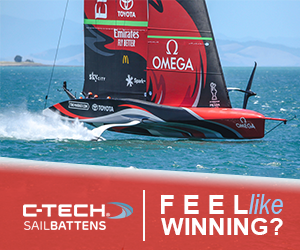
Twelve metres - One formula puts them in a class of their own
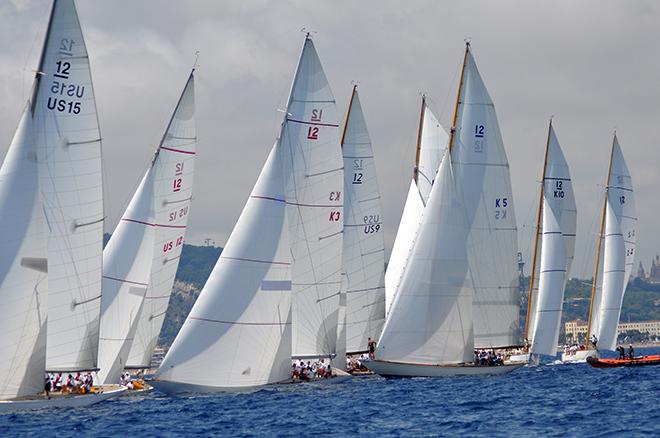
Related Articles
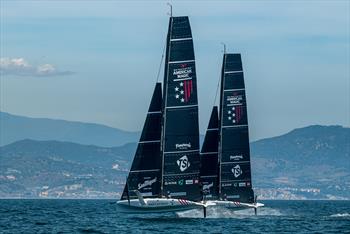
- Share full article
Advertisement
Supported by
12-Meter Designation on Yachts Refers to Measuring Formula
The 12-Meter designation carried by the racing sloops that will meet for the America's Cup does not describe their length or any other single dimension. It reflects their conformity with a complex mathematical formula balancing out to 12. View Full Article in Timesmachine »
Exclusive: Chad opposition figure was likely shot at point-blank range, experts say

“A FEW CENTIMETERS FROM THE SKIN”
Political threat.
The Reuters Daily Briefing newsletter provides all the news you need to start your day. Sign up here.
Additional reporting by John Irish in Paris and Daphne Psaledakis in Washington; Editing by Daniel Flynn
Our Standards: The Thomson Reuters Trust Principles. , opens new tab

Iran's Foreign Minister inaugurates new site for consular services in Damascus
Iran's Foreign Minister Hossein Amirabdollahian inaugurated a new site for Iranian consular services in the Syrian capital on Monday, Syrian state media reported, in a building near the previous consulate flattened in an Israeli airstrike last week.


IMAGES
VIDEO
COMMENTS
The 12 Metre class was used in the Olympic Games of 1908, 1912 and 1920 but few boats participated in these events. The 12 Metre class boats are best known as the boat design used in the America's Cup from 1958 to 1987. Competitiveness between boats in the class is maintained by requiring the boats to be in compliance with the 12 Metre formula.
The following is the mathematical formula by which all 12 Metre yachts are measured. This formula inputs speed producing factors (length (L), sail area (Sa), freeboard (F), and a girth measurement (2D)) through a simple mathematical formula. In order for a yacht to be a Twelve Metre the results of this formula must not exceed 12 Metres.
This formula inputs speed producing factors (length (L), sail area (Sa), freeboard (F), and a girth measurement (2D)) through a simple mathematical formula. In order for a yacht to be a Twelve Metre the results of this formula must not exceed 12 Metres.
Naval architecture firm Sparkman & Stephens designed the 1980 America's Cup winner Freedom, the last victorious 12 Metre. Herb McCormick. Forty years ago this past September, in the waters of Rhode Island Sound just off the coastal city of Newport, a crew of Aussies shocked the sailing world. The 12 Metre Australia II defeated the American ...
The 115 year-old International 12 Metre Class encompasses a living history of racing yacht design by the world's foremost naval architects including Olin Stephens, Clinton Crane, William Fife III, Philip Rhodes, Johan Anker, Ben Lexcen and more who pushed their designs to the very limits of innovation. The resulting boats represented the pinnacle of yacht development from 1907-1987 for the ...
7.1 The girth difference "d" in the rating formula shall be the sum of the differences between the skin girth and chain girth on the port and starboard sides of the yacht measured at the MGS and measured from the lowest point of the immersion mark (IM) to points on the surface of the hull 12.5% of the class rating (1.500m) below the MWL.
In other words, "12 Metre" Class yachts can have a wide range of sail area, length, and speed production aspects. All "12 Metre" yachts are measured using the following mathematical formula: This formula inputs the speed-producing factors: (length (L), sail area (Sa), freeboard (F), and girth measurement (2D). Yachts that meet this ...
The International Rule is an inelegant arbitrary formula that controls and restricts the design of these boats within narrow limits. There is a minimum length, maximum draft, maximum rig heights, and a set relation between length and displacement. ... AUSTRALIA II was the best 12-Metre yacht to sail in the 25-year history of competition at ...
It is important to note the term Metre does not refer to the length of the yacht; it is the product of a formula and denotes the class. A Six Metre yacht can be from 10 metres to 12 metres in length. Metre Rule has proven to be successful and enduring, seeing only minor revisions over the years. Whilst many different Metre Class yachts were ...
The Formula and associated rules for designing and constructing 12 Metre yachts has been modified several times from inception in racing. The purpose of the Formula and rules was to encourage designer creativity to optimise designs to get the best overall performance when racing whilst maintaining competitive racing between the different designs.
The 115 year-old International 12 Metre Class encompasses a living history of racing yacht design by the world's foremost naval architects including Olin Stephens, Clinton Crane, William Fife III, Philip Rhodes, Johan Anker, Ben Lexcen and more who pushed their designs to the very limits of innovation. The resulting boats represented the ...
The 12 Metre class is a rating class for racing sailboats that are designed to the International rule. It enables fair competition between boats that rate in the class whilst retaining the freedom to experiment with the details of their designs. The designation "12 Metre" does not refer to any single measurement on the boat, and is not referencing the vessels overall length, rather, measures ...
The Formula and associated rules for designing and constructing 12 Metre yachts has been modified several times from inception in racing. The purpose of the Formula and rules was to encourage designer creativity to optimise designs to get the best overall performance when racing whilst maintaining competitive racing between the different designs.
The 115 year-old International 12 Metre Class encompasses a living history of racing yacht design by the world's foremost naval architects including Olin Stephens, Clinton Crane, William Fife III, Philip Rhodes, Johan Anker, Ben Lexcen and more who pushed their designs to the very limits of innovation. The resulting boats represented the ...
Instead, the figure that adds to 12 meters is arrived at through a complex formula of many measurements: a yacht's actual sailing length, girth, freeboard, overhangs and the crown of the deck, as ...
Built for speed and for efficiency - and specifically to win races the world over - the 12-Meter yachts are some of the most notorious and have even competed in the Olympics. To be a 12-Meter yacht, the boats must abide by a mathematical formula that (simply said) aggregates all of its dimension with a number resulting in 12 or less.
What is a 12 Metre Class Sailboat? 12 Metre Class sailboats are so called not because of their overall length, but because they must conform to a formula. The formula takes into consideration various measurements of the boat and the result must not exceed 12 metres. In fact, a 12 Metre Class sailboat is approximately 70 feet long with masts 86 ...
THE INTERNATIONAL 12 METRE ASSOCIATION encompasses a living history of racing yacht design by the world's foremost naval architects including Olin Stephens, Clinton Crane, William Fife III, Philip Rhodes, Johan Anker, Ben Lexcen and more who pushed their designs to the very limits of innovation. The resulting boats represented the pinnacle of yacht development from 1907-1987 for the highest ...
The 12 Metre Yacht Club (12MYC) is excited to announce the release of 12mR: An Enduring Legacy. Filmed during the 2019 12mR World Championship in Newport R.I., highlights include racing footage and competitor interviews paired with the experienced insights of the 12MYC's Station Steward Gary Jobson who also wrote and narrated this documentary.
The 12 Metre Yacht Club (12MYC) is excited to announce the release of 12mR: An Enduring Legacy. Filmed during the 2019 12mR World Championship in Newport R.I., highlights include racing footage and competitor interviews paired with the experienced insights of the 12MYC's Station Steward Gary Jobson who also wrote and narrated this documentary.
Many sports have one event, class, or athlete that transcends the sport itself to capture mainstream attention. In the sport of sailing that kind of familiarity is most associated with the 12 Metres - the iconic boat of choice for the America's Cup races from 1958 through 1987.
The 12-Meter designation carried by the racing sloops that will meet for the America's Cup does not describe their length or any other single dimension. It reflects their conformity with a complex ...
A prominent Chadian opposition leader, who was killed in February by government troops, appears to have been shot in the side of the head at close range, according to five forensic experts who ...